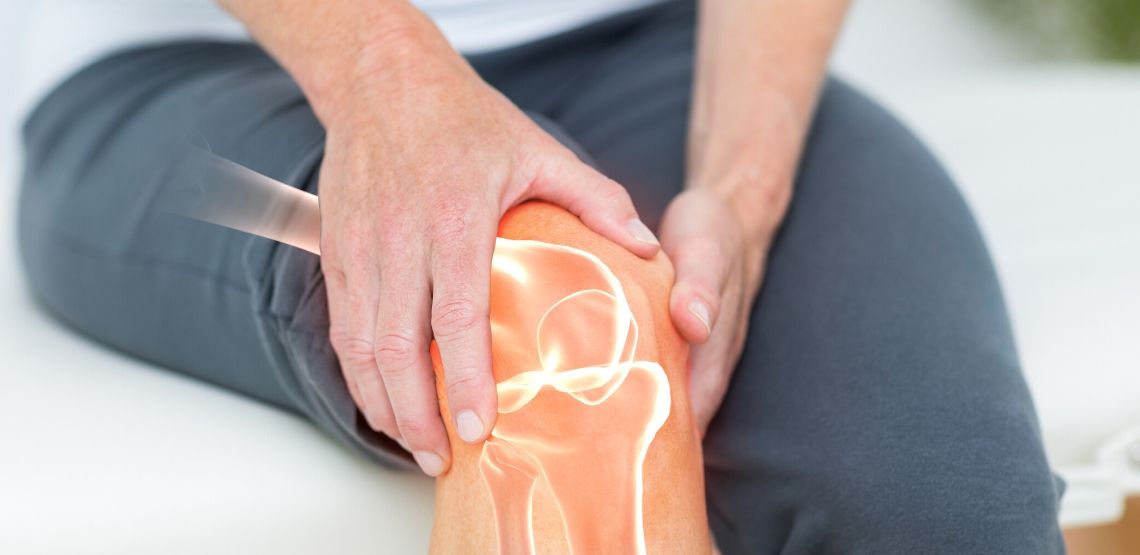Early Signs of Arthritis
Symptoms of arthritis can range from mild to extreme depending on the progression of the illness and the type of arthritis one may have. However, early signs of arthritis tend to be on the milder side for symptoms.
What is Arthritis?
According to Mayo Clinic, “Arthritis is the swelling and tenderness of one or more of your joints."
There are different types of arthritis. The most common types of arthritis are rheumatoid and osteoarthritis.
With osteoarthritis, the cartilage that protects the ends of bones where they meet to form a joint, starts to break down. With rheumatoid arthritis, the joints are attacked by the immune system, starting with the lining of the joints.
Osteoarthritis is the most common form of arthritis. This is usually caused by the wear and tear of the joint’s cartilage. The cartilage is used as a cushion that helps prevent friction from building between the bones where they meet at the joint. However, over time and with enough damage, the bones may grind directly against each other which can cause pain and restrict mobility. This breakdown of the cartilage can occur over a longer period of time, or the process can be expedited through infection or injury.
According to Mayo Clinic, “In rheumatoid arthritis, the body's immune system attacks the lining of the joint capsule, a tough membrane that encloses all the joint parts. This lining (synovial membrane) becomes inflamed and swollen." Over time, this can result in the breakdown of cartilage and even the bones within the joint.
Arthritis Symptoms
Most of the symptoms exist in the joints, however, symptoms one feels often depends on the type of arthritis they have. According to Mayo Clinic, some of the common symptoms include:
- pain
- stiffness
- swelling
- redness
- decreased range of motion
There are also times where people may experience a spike in symptomatic activity. These instances are called flares. Flares can be caused by a wide variety of factors, often depending on the type of arthritis one has.
During the earlier stages of arthritis, depending on the type of arthritis you have, you may experience duller, less extreme instances of the symptoms discussed above.
If you find yourself experiencing any discomfort such as these, a visit to your doctor may be best. They will be able to determine whether it is arthritis or something else. If it is arthritis they will also be able to determine what the best form of treatment (or lack thereof) may be.
Risk Factors of Arthritis
There are certain risk factors that may increase your likelihood of developing arthritis. Genes can have an influence on your likelihood to develop certain types of arthritis because some types run in families.
As one’s age increases, the likelihood of developing a wide variety of types of arthritis increases. Sex also has influence with rheumatoid arthritis being more common in women, while gout is more common in men.
Previous injuries of the joint can also have an influence on whether you may develop arthritis. Those who have injured their joints are more likely to develop arthritis in the injured joint.
Obesity plays a role as well. Being overweight (and even more so for those who are obese) puts added stress on the joints, especially joints such as the knees, hips and spine. Those who are obese have a higher chance of developing arthritis in these areas.
Arthritis Triggers
Arthritis can have periods where symptoms flare up or become worse. However, the causes of these flareups often depend on the type of arthritis that one may have.
With rheumatoid arthritis, the flare often occurs naturally due to processes that cause your joint area to become inflamed. However, when treated promptly, the flare is usually treatable. It is important to visit your doctor if the symptoms of rheumatoid arthritis worsen. Flares can be caused by treatment that is halted or tapered off. Stress, infection and lack of sleep can also influence one’s rheumatoid arthritis to flare.
Osteoarthritis can be a little more difficult to identify flares for. Often times, it can be difficult to tell the difference between a flare and the progression of the disease. Overdoing certain activities or injury to the joint are the most common triggers for flares with osteoarthritis. Bone spurs, repetitive motions, cold weather, changes in air pressure, weight gain and infections can also be potential triggers for flares.
Final Notes
Arthritis can be difficult to deal with. It can make movement painful and tiresome, and often times it can continue to get worse over time. This is why it is important to speak to your doctor if you feel yourself start to develop any of these symptoms in your joint areas. They may be able to provide you with treatment options to ease your pain and help reduce the likelihood of flares in the future.
